Some findings of outstanding neophytes from Hesse are presented here. Frequent neophytes as Solidago, Amaranthus etc. aren't mentioned here anymore because these have already been shown in Neophytes in the 'Kurpfalz', the presentation on the region around Mannheim and Heidelberg, at which Hesse is bordering in the North and East.

Pimpinella peregrina / Southern Burnet Saxifrage
Apiaceae / Umbellifers
Left: The Southern Burnet Saxifrage Pimpinella peregrina, which originates from the western Mediterranean, is currently about to establish in southern Germany. It is containd in seed mixtures for greening and fixing of road slopes, and might have spread out of such sites. The photo has been taken at Frankfurt-Kalbach.
Right: The Giant Hogweed Heracleum mantegazzianum, which has been introduced from the Caucasus as an ornamental plant, grows taller than a man and if it is touched it can cause burnings on the skin. For this reason people combat against stems of this species which ran wild. The photo has been taken at a roadside in the Odenwald near Darmstadt.

Heracleum mantegazzianum / Giant Hogweed
Apiaceae / Umbellifers
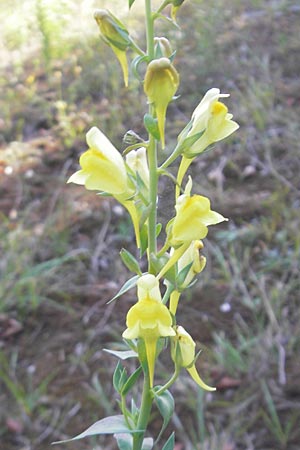
Linaria dalmatica / Dalmatian Toadflax
Plantaginaceae / Plantain Fam.
Left: The Dalmatian Toadflax Linaria dalmatica is more than a meter tall, it comes from the eastern Mediterranean, and colonizes on an inland dune near Seeheim-Jugenheim.
Right: Most probably the Himalayan Fountain Grass Cenchrus flaccidus which comes from East Asia and Australia has been sowed in order to fix the slope of a retaining basin near Seeheim-Jugenheim years ago. At the inner slope of the basin it is still available, but in between also in big numbers on waste land on the other side of a rural road.
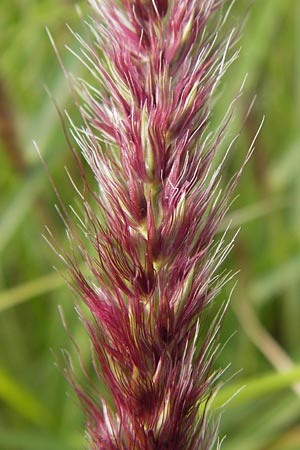
Cenchrus flaccidus / Himalayan Fountain Grass
Poaceae / Grass Fam.
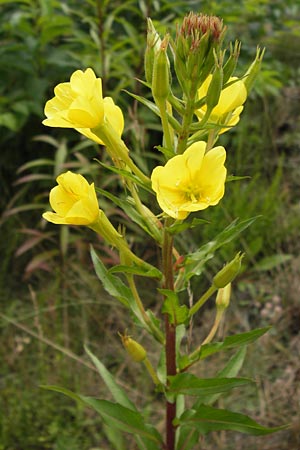
Oenothera angustissima / Red-Tips Evening Primrose
Onagraceae / Willowherb Fam.
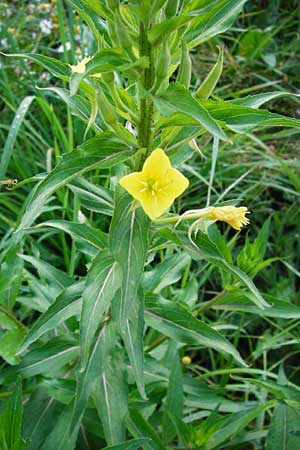
Oenothera scandinavica ? / Scandinavian Evening Primrose
Onagraceae / Willowherb Fam.
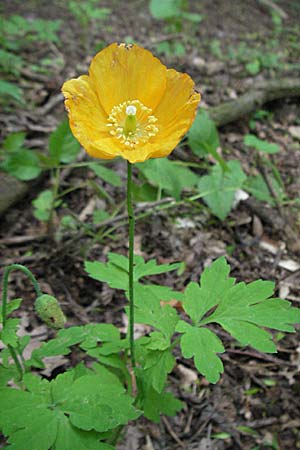
Meconopsis cambrica / Welsh Poppy
Papaveraceae / Poppy Fam.
Near Gorxheim-Trösel and also near Unterflockenbach in the western part of the Odenwald grows Welsh Poppy Meconopsis cambrica at paths in the wood. Most probably it is a garden escape.
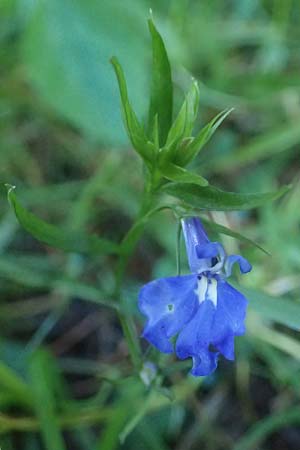
Lobelia erinus / Trailing Lobelia
Campanulaceae / Bellflower Fam.
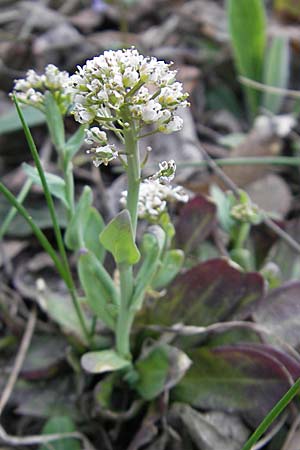
Noccaea caerulescens / Alpine Penny-Cress
Brassicaceae / Crucifers
At the roadside near Trösel in the foremost part of the Odenwald Alpine Penny-Cress Noccaea caerulescens is occurring, an alpine plant of which the seed might have found its way to here by a car.
Both neophytes shown in this row are found in nature reserve 'Kuehkopf-Knoblochsaue' near Stockstadt on the Rhine.

Lindernia dubia / Yellowseed False Pimpernel
Linderniaceae / False Pimpernel Fam.
Origin: America.

Clematis viticella / Italian Clematis
Ranunculaceae / Buttercup Fam.
Origin: Mediterranean.
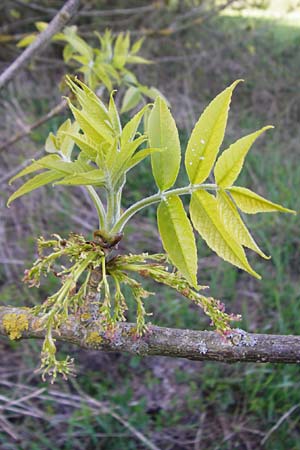
Fraxinus pennsylvanica / Green Ash
Oleaceae / Ash Fam.
The Green Ash which once had been introduced from North America had to be combated already in the nature reserve Kühkopf-Knoblochsaue because it reproduces better than many native trees.

Aralia elata / Japanese Angelica Tree
Araliaceae / Ivy Fam.
At the edge of a wood above Unterflockenbach in the western part of the Odenwald a big colony of Japanese Angelica Tree Aralia elata can be found. Most probably the first plant or seed

Aralia elata / Japanese Angelica Tree
Araliaceae / Ivy Fam.
has been thrown out of a garden. Its origin is Eastern Asia.

Tetradium daniellii / Bee Bee Tree, Korean Evodia
Rutaceae / Rue Fam.
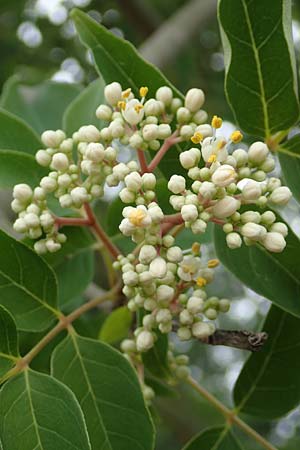
Tetradium daniellii / Bee Bee Tree, Korean Evodia
Rutaceae / Rue Fam.
In a soil depot some young trees of Bee Bee Tree Tetradium daniellii have been found which might have come up from seed. The origin of the tree is Asia.
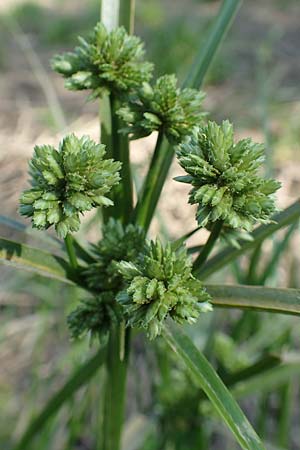
Cyperus eragrostis / Pale Galingale
Cyperaceae / Sedge Fam.
Left: Several times Pale Galingale Cyperus eragrostis has been reported at two different retarding basins near Bickenbach, but it appears not in every year.
Right: Since years there is a stable presence of the grass Mediterranean Hair Grass Rostraria cristata, which comes from the Mediterranean region, on a sidewalk in Frankfurt-Alt Niederursel.

Rostraria cristata / Mediterranean Hair Grass
Poaceae / Grass Fam.
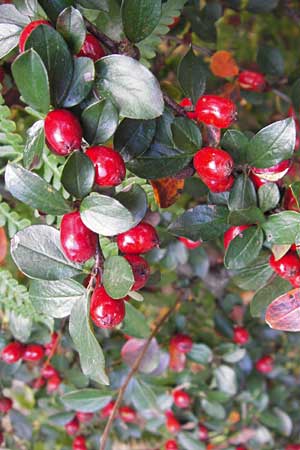
Cotoneaster divaricatus / Spreading Cotoneaster
Rosaceae / Rose Fam.

Euonymus fortunei / Fortune's Spindle
Celastraceae / Spindle Fam.
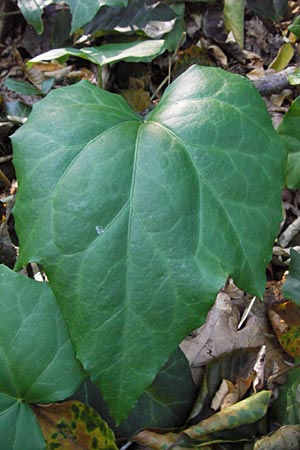
Hedera colchica / Georgian Ivy
Araliaceae / Ivy Fam.
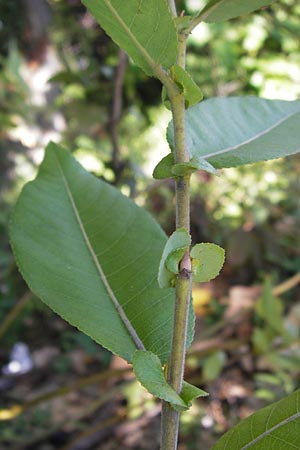
Salix eriocephala / Missouri River Willow, Yellow Willow
Salicaceae / Willow Fam.
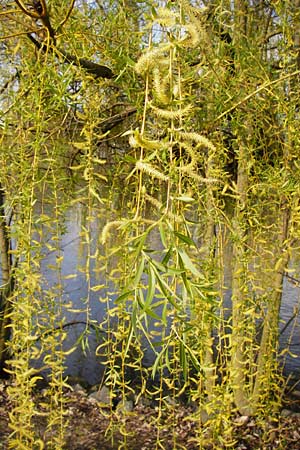
Salix alba x babylonica / Golden Weeping Willow
= Salix x sepulcralis
Salicaceae / Willow Fam.
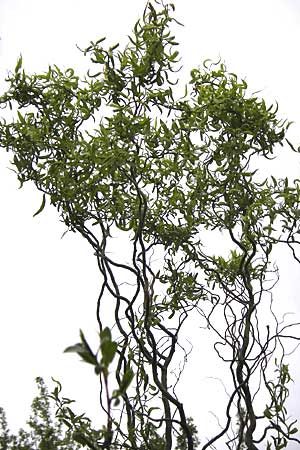
Salix matsudana / Chinese Willow
Salicaceae / Willow Fam.

Tellima grandiflora / Fringe Cups
Saxifragaceae / Saxifrage Fam.

Epimedium perralderianum / Barren-Wort
Berberidaceae / Barberry Fam.
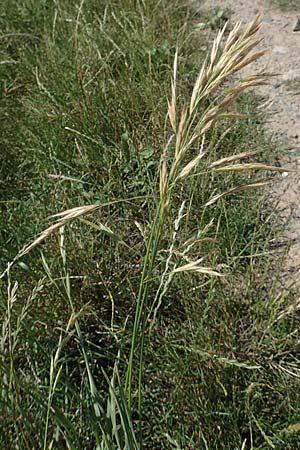
Bromus sitchensis / Alaska Brome
Poaceae / Grass Fam.

Puschkinia scilloides / Russian Snowdrop
Asparagacae / Asparagus Fam.
In the open country near Heusenstamm a population of Russian Snowdrop Puschkinia scilloides was surviving for years. The plant comes from the mountains of Middle East, is frequently grown in parks, and most probably also here the first ones have been planted.
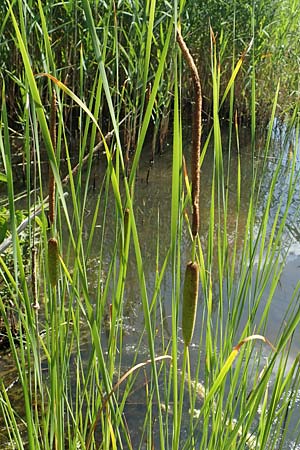
Typha laxmannii / Laxmann's Bulrush
Typhaceae / Bulrush Fam.
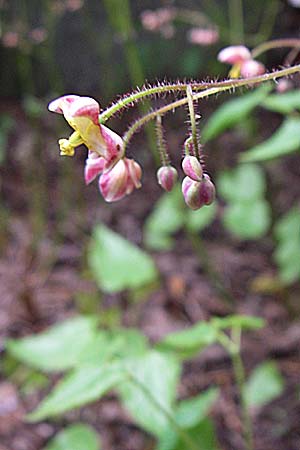
Epimedium alpinum / Barren-Wort
Berberidaceae / Barberry Fam.
Already since about 200 years a population of the Barren-Wort Epimedium alpinum is growing at a pond in the wood near Offenbach. It reproduces steadily. Most probably it has been planted long ago. It is an alpine plant.
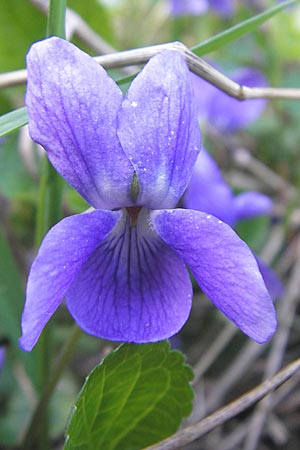
Viola suavis / Russian Violet
Violaceae / Violet Fam.

Ornithogalum boucheanum / Bouché's Star of Bethlehem
Asparagacae / Asparagus Fam.
A big population of Bouché's Star of Bethlehem Ornithogalum boucheanum which originates from Eastern Europe was growing in a park at Babenhausen for tens of years, unfortunately I never saw it in flower. In 2016 I couldn't find any plant of it anymore.
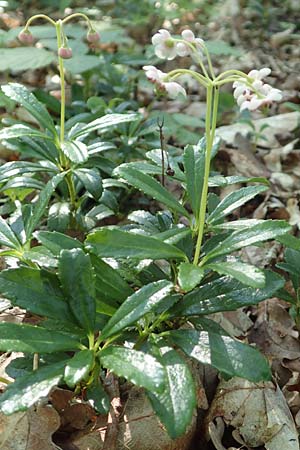
Chimaphila umbellata / Pipsissewa
Ericaceae / Heather Fam.
Right: In the Spessart mountains there is a wet slope where the American Wild Iris Iris versicolor is growing together with the native Yellow Iris and Common Reed.

Iris versicolor / Wild Iris
Iridaceae / Iris Fam.
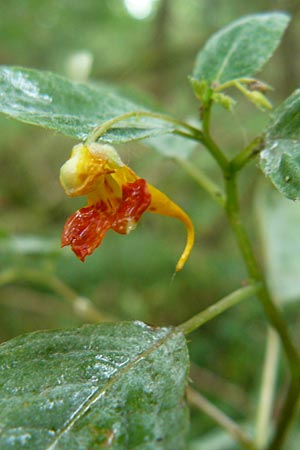
Impatiens capensis / Orange Jewelweed, Spotted Touch me not
Balsaminaceae / Balsam Fam.
Left: At several places on the banks of the Lahn below Marburg the Orange Jewelweed Impatiens capensis has been seen, which originates from North America. At least in a riparian forest near Gießen it grows numerously and stable, together with the frequent Indian Balsam Impatiens glandulifera which has been indroduced from the Himalaya. Impatiens capensis is looking similar to the native Touch me not Impatiens noli-tangere, but has red blossoms.
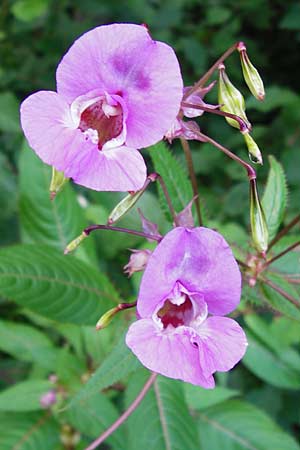
Impatiens glandulifera / Indian Balsam
Balsaminaceae / Balsam Fam.
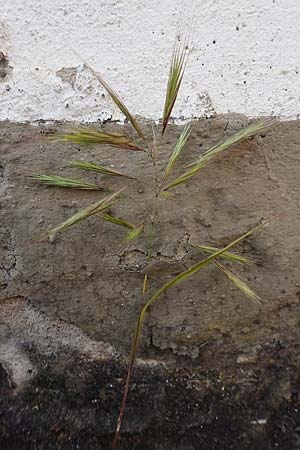
Bromus madritensis / Compact Brome
Poaceae / Grass Fam.
Assmannshausen
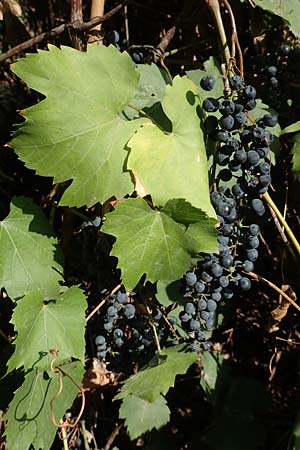
Vitis riparia / Riverbank Grape, Frost Grape
Vitaceae / Grape-Vine Fam.
Frankfurt-Riederwald
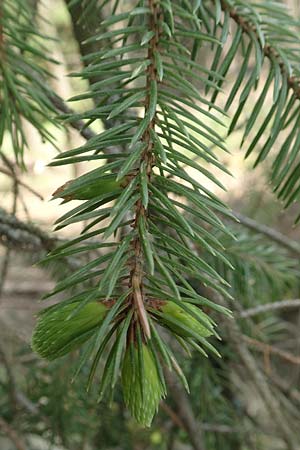
Picea sitchensis / Sitka Spruce
Pinaceae / Pine Fam.
Breitscheid
In a pond near Frankfurt, which belongs to a soil depot, the African Curly-Leaved Waterweed Lagarosiphon major is occurring.

Crassula helmsii / Swamp Stonecrop, New Zealand Pygmyweed
Crassulaceae / Stonecrop Fam.
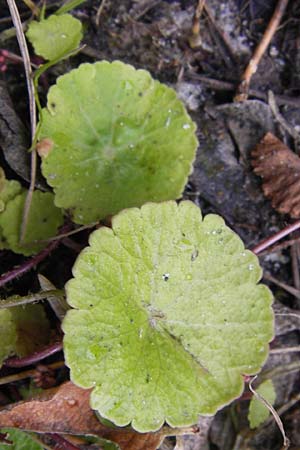
Hydrocotyle verticillata / Shield Pennywort, Whorled Pennywort
Araliaceae / Ivy Fam.
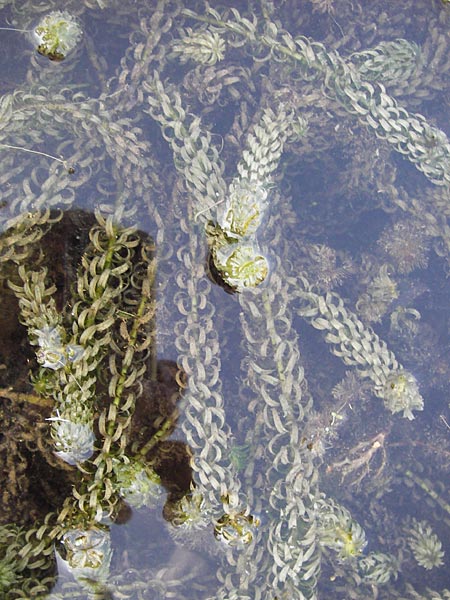
Lagarosiphon major / African Curly-Leaved Waterweed
Hydrocharitaceae / Frogbit Fam.

Wolffia columbiana / Columbian Water-Meal
Araceae / Arum Fam.
Left: As its name says Wolffia columbiana is of South-American origin and has most probably been introduced together with other plants for aquariums or garden ponds. In the last years it has appeared time and again in ponds en masse, mainly along the Rhine but also near Großkrotzenburg not far from the Main. It is probable that it is spread here by water birds.
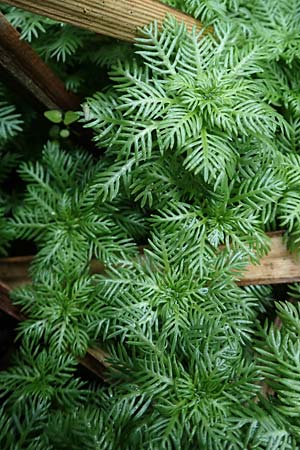
Myriophyllum aquaticum / Parrot Feather Water Milfoil
Haloragaceae / Water Milfoil Fam.
In the Knüll mountains West of Bad Hersfeld some trees and bushes were found which ran wild:
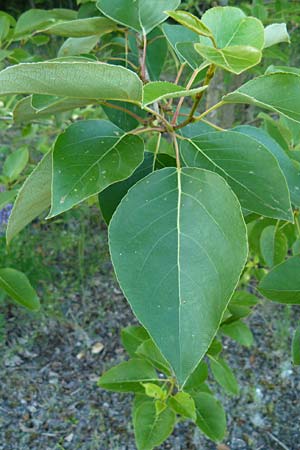
Populus trichocarpa / Black Cottonwood, Western Balsam Poplar
Salicaceae / Willow Fam.
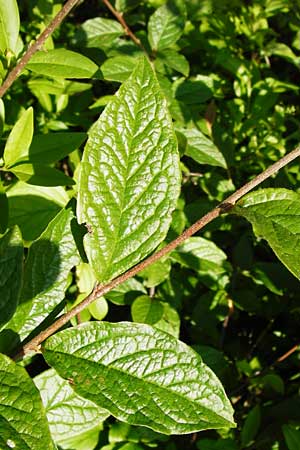
Cotoneaster bullatus / Hollyberry Cotoneaster
Rosaceae / Rose Fam.